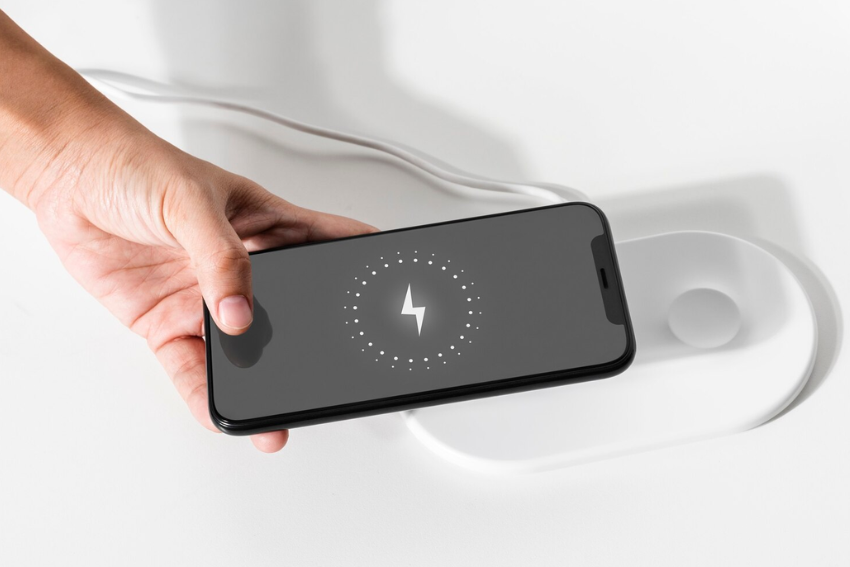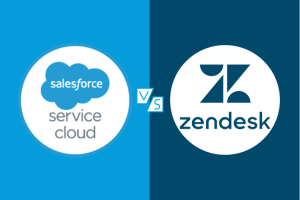Myths about wireless charging often cause unnecessary hesitation, keeping people from enjoying one of modern technology’s simplest conveniences. Is it bad for your battery? Is it dangerously slow? Let’s cut through the noise and examine the facts. We’re separating fiction from reality to give you a clear, honest look at how wireless charging really works.

Myth 1: Wireless Charging Damages Your Phone’s Battery
The Truth: Heat is the real enemy, not the charging method. Modern wireless charging, when done correctly, is no more harmful to your battery than using a cable.
All charging generates a bit of heat, but the idea that wireless charging is inherently more damaging is outdated. The key factor is the quality of your charger. Cheap, low-quality, or uncertified chargers can waste energy as excess heat, which can, over time, affect battery health. However, a high-quality, Qi-certified charger from a reputable brand is engineered for efficiency and includes built-in thermal management to minimize heat.
Furthermore, your phone is smarter than you might think. Modern smartphones come with sophisticated battery management systems that prevent overcharging, whether you’re using a wired or wireless charger. These systems carefully regulate the power flow to protect your battery’s longevity.
- The Real Culprit: Excessive heat from poor-quality chargers.
- The Solution: Invest in a certified, high-quality wireless charger from a brand you trust.
Myth 2: Wireless Charging Is Painfully Slow
The Truth: This might have been true a decade ago, but technology has moved on. While the earliest wireless chargers were slow, the technology has advanced significantly.
Today’s fast wireless charging standards can deliver power at speeds of 7.5W, 10W, and even 15W. For many modern smartphones, this is more than enough to provide a substantial charge quickly. You can often get a 50% charge in about 30 minutes with a compatible device and charger.
Yes, the absolute fastest wired chargers on the market can still outpace wireless ones. However, for daily use—like topping up your battery at your desk or charging overnight—the speed of modern wireless charging is more than sufficient for most people. The slight difference in time is often worth the trade for sheer convenience.
Myth 3: Wireless Charging Is Unsafe and Emits Harmful Radiation
The Truth: Wireless charging is safe and uses a harmless form of non-ionizing radiation. This is perhaps the most common and alarming myth, but science is clear.
Wireless chargers use electromagnetic fields to transfer energy, but these are extremely low-energy and fall into the category of non-ionizing radiation. This is the same type of radiation used by Wi-Fi routers and Bluetooth speakers, and it is not powerful enough to damage DNA or cells. The Environmental Protection Agency (EPA) and other international health bodies confirm that the low levels of energy emitted by wireless chargers are well within established safety limits.
Reputable wireless chargers also come with multiple safety features, such as foreign object detection. This means the charger will automatically shut off if it detects something metal like a key or coin on the pad, preventing unnecessary energy use and overheating.
Myth 4: You Can’t Use Your Phone While It’s Charging Wirelessly
The Truth: You absolutely can, and charger design has evolved to make it easy. The early “puck” style pads did require your phone to lie flat, but the market has diversified.
Modern charging stands allow you to prop your phone up vertically or horizontally. This lets you comfortably view your screen for video calls, watching movies, or browsing the web while your device powers up. The advent of multi-coil chargers has also created a larger “sweet spot,” so you don’t have to be ultra-precise with placement.
While you might need to take it off for intensive tasks like gaming (to prevent heat buildup), for most everyday uses, your phone remains fully functional. It’s a seamless way to stay connected without being tethered to an outlet.
Myth 5: Wireless Charging Only Works with Smartphones
The Truth: The ecosystem is vast and expanding rapidly. Wireless charging technology has moved far beyond smartphones.
You’ll now find built-in Qi support in a wide range of personal electronics, including:
- Smartwatches (like the Apple Watch)
- True Wireless Earbuds (like AirPods)
- Some modern laptops
Technology is also being integrated into furniture, cars, and public spaces. Furthermore, wireless charging is proving its worth in larger-scale applications, such as powering autonomous robots and even being developed for electric vehicles (EVs), promising a future where cars can charge themselves without a plug.
How to Get the Best Wireless Charging Experience8
To ensure your device charges safely and efficiently, follow these simple tips:
- Choose Certified Gear: Always look for the Qi-certification logo, especially the new Qi2 standard which offers perfect magnetic alignment and improved efficiency. This is your guarantee of safety and performance.
- Use the Right Power Adapter: Your wireless charging pad needs to be plugged into a wall adapter that provides enough power. Using a weak or underpowered brick will result in slow charging speeds.
- Mind Your Case: While wireless charging works through most standard cases, very thick or “armor-style” cases can interfere. Also, remember to remove credit cards from wallet cases, as the magnetic fields can damage their strips.
- Keep It Cool: Place your charger on a hard, flat surface in a well-ventilated area. Avoid soft surfaces like beds or couches that can trap heat around your device.
The Bottom Line
The myths about wireless charging often stem from the early days of technology. Today, it is a mature, safe, and incredibly convenient way to power your devices. By choosing quality, certified equipment and following basic best practices, you can confidently cut the cord and enjoy a clutter-free charging experience. The future is wireless, and it’s smarter than ever.
Frequently Asked Questions (FAQs)
Is it okay to leave my phone on the wireless charger overnight?
Yes, it is generally safe. Modern phones and chargers have systems that stop charging once the battery is full, preventing overcharge. For optimal long-term battery health, however, it’s best not to keep your battery at 100% charge constantly.
Does wireless charging work through a phone case?
In most cases, yes. It works perfectly fine with standard plastic, silicone, or rubber cases. You may run into issues only with very thick cases (over 3mm), those with metal plates, or wallet cases that contain credit cards.
Is wireless charging less efficient than wired charging?
Wireless charging is less energy-efficient than wired charging, with some energy lost as heat during transfer. However, the efficiency of modern chargers has improved significantly, with many quality models achieving efficiency rates upwards of 80%.
What is Qi charging?
Qi (pronounced “chee”) is the global, universal standard for wireless power transfer. It’s technology that ensures a wireless charger from one brand can work seamlessly with a phone from another, as long as both are Qi-certified.


